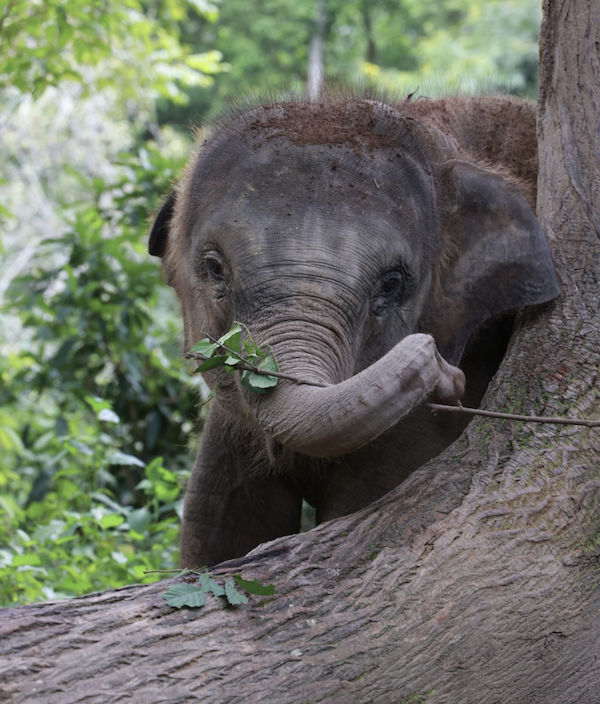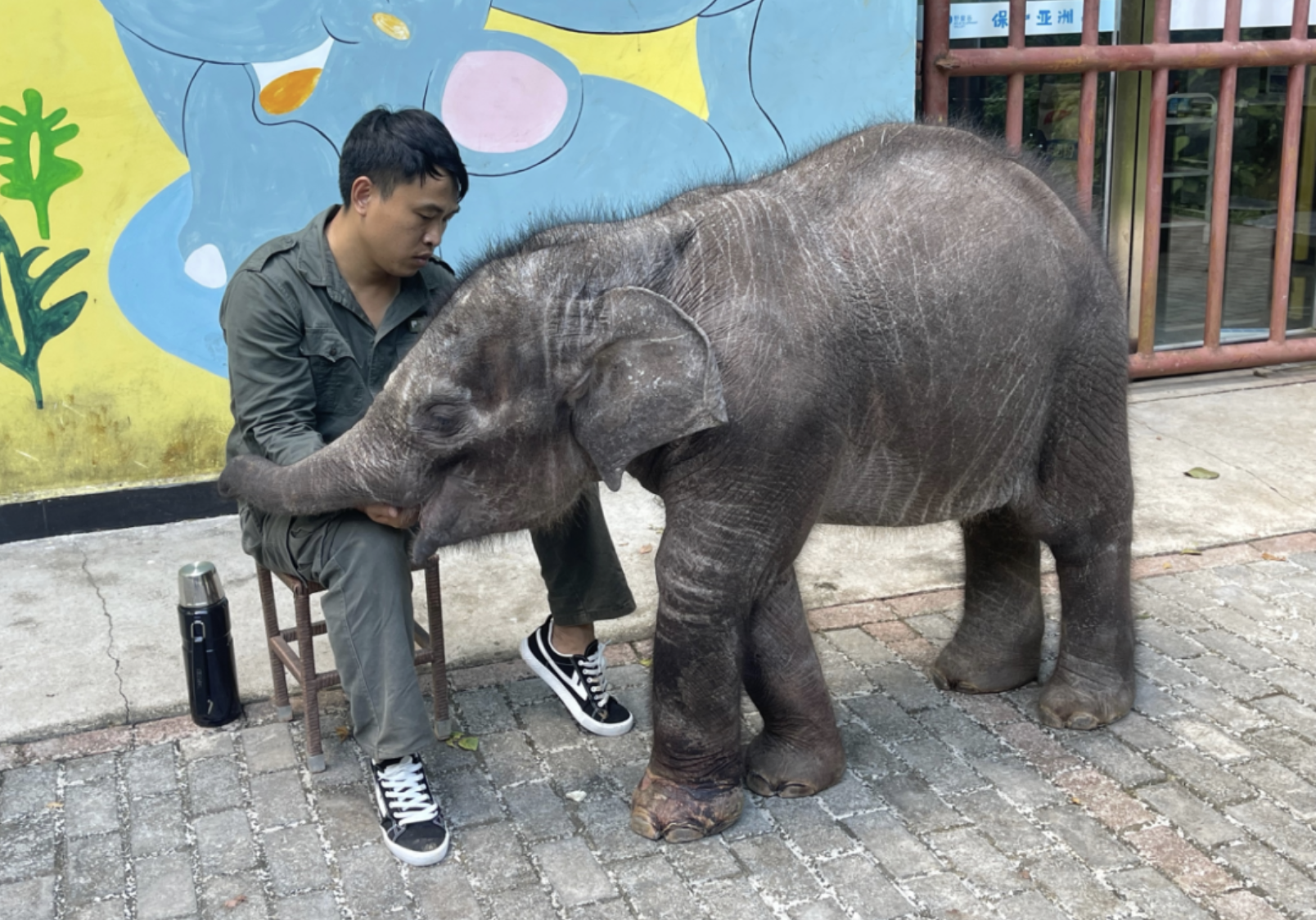How Elephant Canteens Can Help Reduce Human-Wildlife Conflict
Conservationists have been working with local communities to address the issue by providing reliable food sources for the elephants through a project launched by the Tropical Rainforest Protection Foundation (TRPF).
The program, one of the projects supported by funds raised through Tencent Foundation’s 99 Giving Day charity campaign this year, is designed to manage the results of human-animal conflict. On top of that, it aims to ensure benefits for villagers through mixed use of land that maximizes the productivity of the soil.
 A baby elephant in Yunnan Province, China.
A baby elephant in Yunnan Province, China.
Habitat Loss Disrupts Animal Behavior
Debate ensued about the cause of the migration. Some said it was an animal error by the leader of the herd, though most believe that it was the result of environmental degradation. Either way, the issue shone light on the plight of the elephants, as well as the potential for human-wildlife conflict if we don’t learn to coexist with nature.
Yunnan province is home to almost all of China’s wild elephants. Many of them live in the country’s only tropical rainforest, within nature reserves in Xishuangbanna prefecture, near the border with Myanmar and Laos. The establishment of protected areas, along with a hunting ban, has helped their population nearly double to about 300 since the 1990s.
Nowadays, the main problem facing elephants is not illegal poaching, but the destruction of their habitat and food sources because of farming and agriculture. Intensive and unsustainable practices have compounded the issue, making land less fertile.
Dramatic Measures Lead to Vicious Cycle
Encounters between villagers and elephants are increasingly common and steps have been taken to reduce conflict by establishing early-warning systems, erecting electric fences, and paying compensation for crop and property damage and losses.
The measures don’t always prevent elephants from emerging from the reserves to eat the mature crops, however, leading some villagers to abandon traditional crops such as corn, and replace them with rubber and tea, which elephants dislike. This turns into a downward spiral in which elephants have less food to eat, causing them to roam further.
Sustainable Solutions
Over the past five years, the TRPF has created nearly 1,500 acres of canteens that feed maize and canes to the elephants in surrounding areas. The foundation expects more infrastructure in the future to satisfy the voracious appetites of the elephants.
The next phase of the project will see the creation of food banks by partially restoring traditional rotation farming methods and encouraging a return to coexistence as happened in the distant past.
 A Ranger feeds a baby elephant in an elephant canteen.
A Ranger feeds a baby elephant in an elephant canteen.
Utilizing Traditional Farming Methods
By restoring traditional farming methods that help regenerate the land, and building elephant canteens that offer animals a variety of nutritious food, we help turn villagers from victims of wildlife protection to beneficiaries with an invested interest in the project’s success.
Agricultural land on the edge of the reserves has been set aside to cultivate nutrient-rich plants suitable for elephants. Plots are reserved for this purpose for several years before being returned to normal agricultural use, like growing bananas and sugar cane.
More than 300 additional acres have been found for elephant canteens in the current phase. Villagers are paid RMB800 (US$110) for each acre of land given over to the project utilized for elephant canteens. It’s a good start but we need to continue investing. To date, more than 5,300 people have donated funds, which will be mainly used for subsidies and purchasing crop seeds.
It’s an important step in restoring balance and harmony between humans and the nature again.


